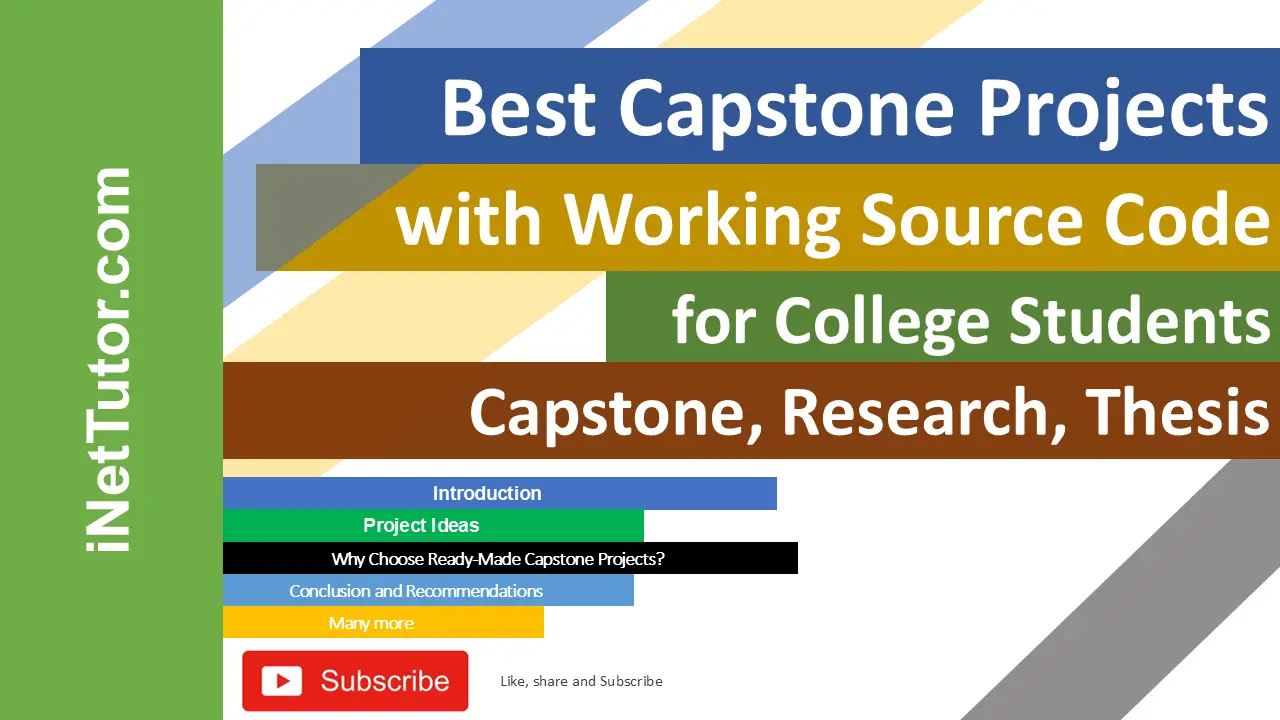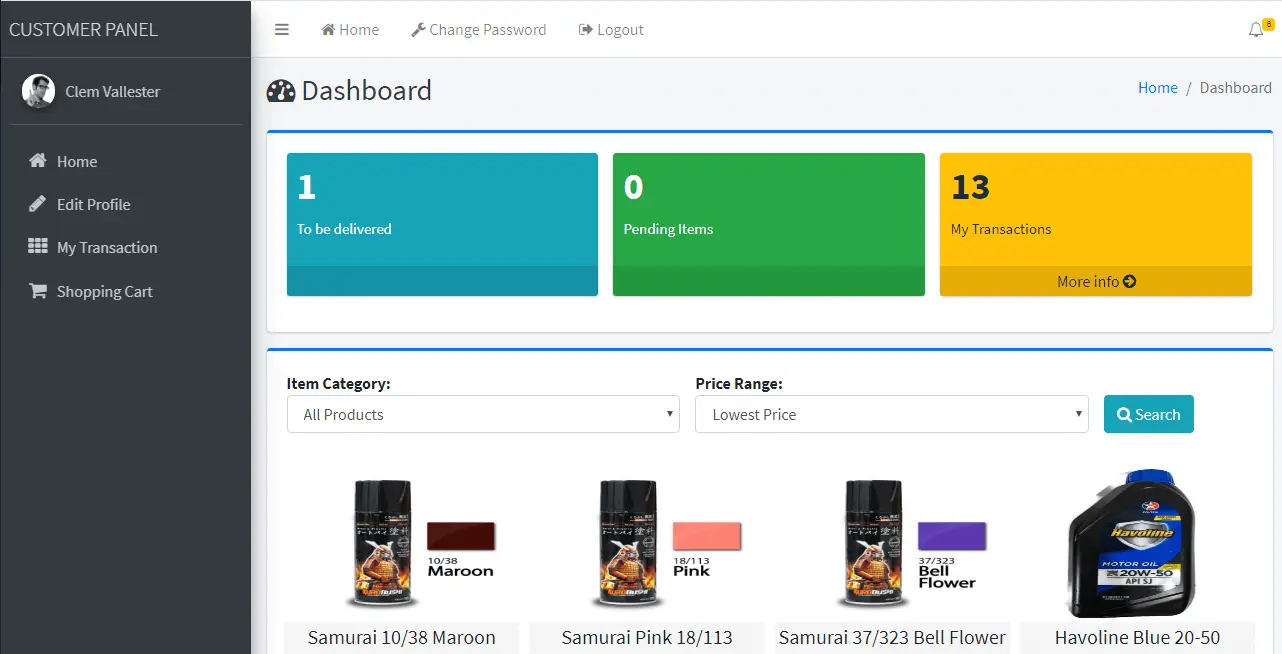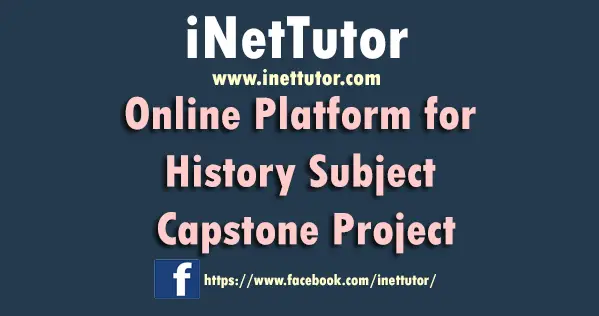Innovative Ideas for Digital Animation and Game Design
Introduction
Table of Contents
Digital animation and game design are two of the most exciting and fast-growing fields in the creative and tech industries. From short animated films to immersive video games, these digital experiences shape how we tell stories, entertain, and interact with technology. They combine art, storytelling, and programming to create engaging visual content that captures the attention of users across all ages.
Innovation plays a vital role in the success of any digital animation or game development project. With new technologies like virtual reality, artificial intelligence, and motion capture constantly evolving, creators are challenged to think outside the box and push the boundaries of creativity. Whether you’re a student, independent developer, or digital media professional, coming up with fresh and original project ideas is key to standing out in this competitive space.
In this blog post, I’ll share a collection of innovative ideas you can explore in digital animation and game design. These ideas are perfect for academic capstone projects, portfolio pieces, or even indie game development. Let’s dive into the world of creative possibilities that blend technology, storytelling, and interactivity.

Understanding the Core Elements
Before jumping into innovative ideas, it’s important to understand the core elements that form the foundation of digital animation and game design. These elements help you create projects that are not only visually appealing but also engaging and functional.
Digital animation is all about bringing still images to life through movement and expression. Key principles include timing, spacing, squash and stretch, anticipation, and exaggeration. These principles give characters and objects a sense of weight, emotion, and realism. Whether you’re working in 2D or 3D, mastering these basics helps you create smoother and more believable animations that resonate with viewers.
Game design, on the other hand, focuses on crafting experiences that players can interact with. It involves defining game mechanics, rules, objectives, and challenges that keep players engaged. A strong game design also considers player motivation, user interface, and overall balance. Good game design makes the experience fun, fair, and rewarding.
The intersection of animation and interactivity is where the magic truly happens. Animation breathes life into game environments, characters, and user feedback, while interactivity empowers the player to influence what happens on screen. Together, they create an immersive experience that draws users into the digital world. Understanding how these two disciplines complement each other is essential for building innovative and memorable digital projects.
Trends Driving Innovation
Innovation in digital animation and game design is fueled by rapidly evolving technologies and creative approaches. Staying updated with current trends can help you build projects that feel fresh, exciting, and relevant. Let’s explore some of the key trends driving innovation today.
Emerging technologies like augmented reality (AR), virtual reality (VR), artificial intelligence (AI), and motion capture are transforming how we create and experience digital content. AR and VR allow users to step into fully immersive worlds, while AI adds intelligence to characters and gameplay. Motion capture technology helps animators create lifelike movements by recording real human actions. These tools open up new ways to engage audiences and create dynamic, interactive experiences.
Storytelling through immersive design is another powerful trend. Rather than telling stories in a linear format, creators now build interactive narratives that respond to user choices. This approach blends game mechanics with cinematic storytelling, allowing players to shape the outcome of a story based on their decisions. It creates deeper emotional connections and enhances user engagement.
Indie development and creative freedom have also pushed the boundaries of what’s possible. With access to free and affordable tools, independent creators are releasing unique animations and games that challenge traditional formats. This movement encourages experimentation and originality, giving rise to projects that focus on strong artistic styles, personal storytelling, and meaningful gameplay.
Lastly, cross-platform and mobile-first trends are reshaping how content is designed and delivered. Audiences now expect to access games and animations across devices—whether on PC, console, or smartphone. Developers must consider responsive design and performance optimization to ensure smooth experiences everywhere. This shift also creates new opportunities for mobile-specific interactions and bite-sized content formats.
By embracing these trends, you can create innovative digital animation and game design projects that stand out and stay ahead in today’s creative industry.
Categories of Innovative Project Ideas
Digital animation and game design are bursting with possibilities for creators eager to push boundaries. Whether you’re into interactive storytelling, experimental gameplay, or projects that make a difference, there’s something here for everyone. Below, we’ve outlined 50 innovative project ideas across four categories: Interactive Animation Concepts, Experimental Game Design, Hybrid Projects, and Educational and Social Impact Projects. Each idea includes a brief description and suggested development tools to help you get started. Let’s dive in and spark your next big creation!
- Interactive Animation Concepts (12 Ideas)
Interactive animations let audiences shape the story, blending creativity with engagement. These projects focus on dynamic visuals and user-driven narratives.
- Choose-Your-Own-Adventure Animated Series
Description: Create an animated series where viewers pick plot points via a mobile app, like choosing a character’s next move in a fantasy tale. Each choice leads to unique scenes with branching narratives.
Tools: Adobe Animate (for animation), Unity (for interactivity), Twine (for story branching). - Real-Time Animated Storytelling App
Description: Build an app where users input text or voice prompts to generate animated short stories in real time, like a magical forest reacting to their words.
Tools: Blender (for 3D assets), Unreal Engine (for real-time rendering), Google Cloud Speech-to-Text (for voice input). - Gesture-Controlled Animated Experience
Description: Design an animation that responds to hand gestures via webcam, letting users “paint” scenes or guide characters with their movements.
Tools: Processing (for gesture recognition), Adobe After Effects (for animation), OpenCV (for motion tracking). - AR-Enhanced Animated Storybook
Description: Create a digital storybook where characters pop out in augmented reality when viewed through a phone, with tappable interactions to unlock mini-animations.
Tools: Unity with ARKit/ARCore (for AR), Maya (for character rigging), Vuforia (for AR triggers). - Mood-Responsive Animation Shorts
Description: Develop animations that shift visuals based on user mood, detected via typed inputs or facial recognition, like a sunny scene turning stormy for “sad.”
Tools: Blender (for animation), Affectiva SDK (for emotion detection), JavaScript (for web integration). - Collaborative Animated Mural
Description: Build a web platform where users add animated elements to a shared digital mural, creating an evolving, community-driven artwork.
Tools: p5.js (for web animation), Firebase (for real-time collaboration), Adobe Illustrator (for assets). - Interactive Music Video
Description: Design a music video where viewers click or tap to change scenes, characters, or effects, syncing visuals to the song’s beat.
Tools: Adobe Animate (for frame-by-frame animation), WebGL (for interactivity), Audacity (for audio syncing). - Voice-Activated Animated Characters
Description: Create a short film where characters respond to user voice commands, like shouting “run” to make them sprint or “smile” to change expressions.
Tools: Unity (for character control), Amazon Lex (for voice recognition), ZBrush (for character modeling). - 360-Degree Animated Adventure
Description: Produce a VR-compatible animated story where users look around to explore scenes, like a jungle with hidden interactive creatures.
Tools: Blender (for 360 rendering), Oculus SDK (for VR), Premiere Pro (for editing). - Time-Travel Animated Puzzle
Description: Build an animation where users solve puzzles to unlock different historical eras, with each choice revealing new animated sequences.
Tools: Godot (for puzzle logic), Toon Boom Harmony (for animation), Inkscape (for 2D assets). - Dynamic Weather Animation App
Description: Create an app showing animated landscapes that change with real-world weather data, like rain animations during a storm in the user’s city.
Tools: OpenWeatherMap API (for weather data), Adobe Animate (for visuals), React (for app interface). - Crowdsourced Animated Anthology
Description: Develop a platform where animators submit short clips based on a theme, and users vote to combine them into a seamless anthology film.
Tools: Django (for web platform), Krita (for 2D animation), Vimeo API (for video hosting).
- Experimental Game Design (14 Ideas)
These games challenge conventions with unique mechanics, minimalist designs, or procedurally generated content for fresh experiences.
- Emotion-Driven Puzzle Game
Description: Design a puzzle game where levels adapt based on player emotions, detected via keyboard inputs or webcam, like calming visuals for stress.
Tools: Unity (for game logic), Affectiva SDK (for emotion tracking), Aseprite (for pixel art). - Minimalist No-Interface Adventure
Description: Create a game with no HUD or menus, using environmental cues like lighting or sound to guide players through a mysterious world.
Tools: Godot (for lightweight development), FMOD (for audio design), Blender (for 3D environments). - Procedural Storytelling RPG
Description: Build an RPG where quests and characters are generated uniquely for each playthrough, ensuring no two stories are the same.
Tools: Unreal Engine (for world generation), SQLite (for data management), Substance Painter (for textures). - Sound-Based Exploration Game
Description: Develop a game where players navigate a dark world using only sound cues, like echolocation to reveal animated obstacles.
Tools: Unity (for audio integration), Wwise (for spatial audio), Procreate (for concept art). - Time-Loop Strategy Game
Description: Create a strategy game where players repeat a single day, learning from past loops to change outcomes, like saving a village.
Tools: Godot (for mechanics), Trello (for planning loops), GIMP (for 2D sprites). - Physics-Driven Art Game
Description: Design a game where players manipulate physics (gravity, wind) to create animated art, like swirling particle patterns.
Tools: Unreal Engine (for physics), Houdini (for particle effects), Photoshop (for textures). - Crowd-Sourced Survival Game
Description: Build a survival game where players vote online to change the world’s rules daily, like adding new resources or disasters.
Tools: Firebase (for real-time voting), Unity (for gameplay), Maya (for 3D models). - Dreamscape Platformer
Description: Create a platformer where levels shift like a dream, with surreal animations and mechanics tied to player actions, like jumping to reshape terrain.
Tools: Godot (for 2D platforming), Krita (for art), Ableton Live (for adaptive music). - Gesture-Controlled Rhythm Game
Description: Develop a rhythm game where players dance or move via webcam to hit beats, with animated visuals syncing to their performance.
Tools: OpenCV (for gesture tracking), Unity (for visuals), Audacity (for beat mapping). - Eco-Simulation Strategy Game
Description: Design a game where players manage a virtual ecosystem, with AI-driven animals and plants reacting to their choices, like building or polluting.
Tools: Unreal Engine (for simulation), Python (for AI logic), Blender (for assets). - Memory-Based Narrative Game
Description: Create a game where players piece together a story by exploring fragmented memories, with visuals shifting as they uncover truths.
Tools: Unity (for narrative flow), Adobe Animate (for cutscenes), Twine (for story mapping). - Color-Blind Accessibility Game
Description: Build a puzzle game relying on sound and texture instead of color, with animated feedback to guide color-blind players.
Tools: Godot (for accessibility focus), FMOD (for audio cues), Inkscape (for textures). - One-Button Survival Challenge
Description: Design a survival game controlled with a single button, where timing creates animated actions like dodging or crafting in a harsh world.
Tools: Unity (for simple controls), Aseprite (for sprites), Logic Pro (for sound effects). - AI-Companion Adventure
Description: Create a game where an AI companion learns from player choices, adapting dialogue and animations to build a unique bond.
Tools: Unreal Engine (for AI integration), Dialogflow (for natural language), ZBrush (for characters).
- Hybrid Projects (12 Ideas)
These projects blend animation and gaming for innovative, cross-disciplinary experiences that captivate audiences.
- Playable Animated Short Film
Description: Produce an animated film where viewers make choices, like deciding a character’s fate, seamlessly blending cinematic scenes with gameplay.
Tools: Unity (for interactivity), Toon Boom Harmony (for animation), DaVinci Resolve (for editing). - Gamified Animation Learning Tool
Description: Build an app teaching animation principles through mini-games, like timing a character’s jump to learn squash and stretch.
Tools: Godot (for game mechanics), Adobe Animate (for tutorials), Firebase (for progress tracking). - Interactive Animated Museum Exhibit
Description: Create a virtual exhibit where users explore animated artworks, clicking to trigger stories or mini-games about each piece.
Tools: Unreal Engine (for 3D spaces), Blender (for animations), WebGL (for browser access). - AR Animated Board Game
Description: Design a board game where AR brings animated characters to life on the table, with players scanning cards to trigger battles or stories.
Tools: Unity with ARCore (for AR), Maya (for characters), Photoshop (for card art). - Animated Visual Novel Game
Description: Develop a visual novel with fully animated cutscenes, where player choices drive both the story and dynamic character expressions.
Tools: Ren’Py (for visual novel framework), Adobe Animate (for cutscenes), Audacity (for voiceovers). - VR Animated Art Gallery
Description: Build a VR gallery where users walk through animated paintings, each triggering interactive stories or puzzles when approached.
Tools: Oculus SDK (for VR), Blender (for animated assets), Substance Painter (for textures). - Gamified Stop-Motion Creator
Description: Create an app where users make stop-motion animations and turn them into simple games, like guiding a clay character through obstacles.
Tools: Dragonframe (for stop-motion), Unity (for game conversion), Premiere Pro (for editing). - Animated Storytelling Card Game
Description: Design a digital card game where each card triggers animated scenes, building a collaborative story based on player moves.
Tools: Godot (for card mechanics), Krita (for card art), Firebase (for multiplayer). - Interactive Animated Documentary
Description: Produce a documentary with animated reenactments where users click to explore details, like artifacts or interviews, in a historical event.
Tools: Adobe After Effects (for animations), JavaScript (for interactivity), Vimeo (for video hosting). - Music-Driven Animated Game
Description: Create a game where players’ actions sync with music to generate animated visuals, like building a city as beats drop.
Tools: Unity (for syncing), Ableton Live (for music integration), Aseprite (for visuals). - AI-Powered Animated Chatbot Game
Description: Build a game where an animated AI character guides players through quests, learning from their responses to personalize the story.
Tools: Unreal Engine (for visuals), Google Dialogflow (for AI), ZBrush (for character design). - Mixed-Reality Animated Theater
Description: Design a mixed-reality experience where animated actors perform on a real stage via AR glasses, with audience choices shaping the play.
Tools: Unity with ARKit (for mixed reality), Maya (for animations), FMOD (for spatial audio).
- Educational and Social Impact Projects (12 Ideas)
These projects use animation and games to teach, inspire, and address real-world challenges with meaningful impact.
- Game Teaching Animation Principles
Description: Create a game where players learn animation concepts like timing by solving puzzles, such as syncing a character’s bounce to music.
Tools: Godot (for puzzles), Adobe Animate (for examples), Trello (for lesson planning). - Animated Climate Change Campaign
Description: Produce an animated series showing climate change effects, with interactive choices like reducing emissions to alter the story’s outcome.
Tools: Blender (for animations), Unity (for interactivity), Photoshop (for backgrounds). - Game for Coding Basics via Animation
Description: Build a game where kids animate characters by writing simple code, like making a bird fly with Python commands.
Tools: Scratch (for coding), Godot (for animation integration), Krita (for art). - Mental Health Awareness Game
Description: Create a narrative game with animated characters guiding players through mental health challenges, offering coping strategies via choices.
Tools: Unity (for storytelling), Adobe Animate (for characters), Twine (for dialogue). - Animated History Learning App
Description: Develop an app with animated reenactments of historical events, letting users explore timelines or quiz themselves on facts.
Tools: Toon Boom Harmony (for animations), React (for app interface), Firebase (for data). - Game Teaching Physics Through Animation
Description: Design a game where players animate objects using physics principles, like adjusting gravity to make a ball roll correctly.
Tools: Godot (for physics simulation), Blender (for assets), Tinkercad (for prototyping). - Diversity-Focused Animated Stories
Description: Create an animated series celebrating diverse cultures, with interactive elements letting users explore traditions or languages.
Tools: Adobe After Effects (for animations), JavaScript (for interactivity), Audacity (for narration). - Anti-Bullying Game for Kids
Description: Build a game where animated characters face bullying scenarios, and players choose kind actions to unlock positive outcomes.
Tools: Unity (for gameplay), Aseprite (for sprites), FMOD (for sound feedback). - Financial Literacy Animated Game
Description: Design a game with animated avatars teaching budgeting, where players make choices like saving or spending to reach goals.
Tools: Godot (for mechanics), Adobe Animate (for avatars), Google Sheets (for tracking). - Wildlife Conservation AR Experience
Description: Create an AR app where animated endangered animals appear in users’ spaces, with quizzes teaching conservation actions.
Tools: Unity with ARCore (for AR), Maya (for animals), Quizlet API (for quizzes). - Animated Accessibility Tutorial Game
Description: Build a game teaching web accessibility through animated challenges, like designing inclusive interfaces for virtual users.
Tools: Ren’Py (for tutorials), Krita (for visuals), JavaScript (for web examples). - Community Health Animated Campaign
Description: Produce an animated series promoting health habits, with interactive quizzes on topics like nutrition or exercise to engage viewers.
Tools: Blender (for animations), React (for quizzes), Canva (for promotional graphics).
Tools and Platforms to Use
When working on innovative digital animation and game design projects, the tools you use can make a big difference. Here’s a look at some of the most effective tools and platforms you can use to bring your creative ideas to life:
Animation Software
These tools are essential for designing characters, scenes, and motion graphics:
- Blender – Free and open-source, ideal for 3D modeling, rigging, and animation.
- Spine – Specializes in 2D skeletal animation, great for game-ready assets.
- Adobe Animate – Perfect for creating 2D animations and interactive content for games and web.
Game Engines
Game engines provide the core framework to build, test, and deploy your interactive experiences:
- Unity – One of the most popular engines for both 2D and 3D games, supports C# scripting and cross-platform publishing.
- Unreal Engine – Known for high-end visuals and powerful Blueprints visual scripting system.
- Godot – Lightweight, open-source engine great for beginners and indie developers, supports 2D and 3D.
Cross-Functional Tools
These platforms help bridge animation and game development, especially for hybrid or narrative projects:
- Live2D – Allows 2D artwork to be animated without redrawing, ideal for visual novels or interactive avatars.
- RPG Maker – Streamlined tool for creating story-rich RPGs with minimal coding required.
- Twine – Best for text-based storytelling and interactive fiction; great for prototyping story paths.
Bonus Tools to Explore:
- Ink by Inkle – A powerful narrative scripting language for branching dialogues and story design.
- Lottie by Airbnb – Delivers lightweight, scalable animations for apps and websites.
- Tiled – A free map editor useful for tile-based games and environments.
Using the right mix of these tools lets you work faster, smarter, and more creatively—whether you’re building a game, telling a story, or designing interactive animations.
Project Planning Tips
Creating a successful digital animation or game design project requires more than just a great idea—it takes strategic planning, creative exploration, and collaborative effort. Here are some project planning tips to guide your process from concept to execution:
- Ideation Techniques for Innovation
Start with brainstorming sessions that encourage wild ideas without judgment. Use techniques like:
- Mind mapping – Visualize connections between themes, mechanics, and characters.
- SCAMPER method – Substitute, Combine, Adapt, Modify, Put to another use, Eliminate, Reverse — helps you think outside the box.
- User personas – Understand your target audience and design experiences tailored to them.
Innovative ideas often come from blending genres, twisting expectations, or solving existing problems in a new way. Don’t be afraid to ask, “What if?”
- Prototyping and Testing Creative Ideas
Once you have a concept, build a prototype quickly. Use tools like:
- Unity or Godot for interactive demos
- Twine for narrative branching
- Storyboard templates or animatics for animated sequences
Keep your first version simple—focus on core mechanics or storytelling flow. Share your prototype with testers and gather feedback early. Iteration is key. Test frequently and adapt based on user experience.
- Collaborating Across Disciplines
Digital animation and game design thrive on teamwork. Bring together:
- Artists for visual style and animation
- Programmers for logic and functionality
- Writers for story development and dialogue
Use collaborative tools like Trello, Miro, or Notion to manage tasks and ideas. Hold regular check-ins and creative reviews. Encourage open communication so every team member contributes their expertise effectively.
By planning thoughtfully and working as a creative team, you’ll be in a better position to turn bold ideas into polished, engaging experiences.
Final Thoughts
Innovation in digital animation and game design thrives when you dare to explore, experiment, and push boundaries. The most impactful projects often come from creators who are willing to take creative risks and break away from the norm.
Don’t be afraid to try something new, even if it feels unconventional. Whether it’s an emotional game mechanic, a unique animation style, or a hybrid of storytelling and interactivity—your bold ideas can shape the future of digital media.
Remember, creativity isn’t just about talent; it’s about consistency, curiosity, and collaboration. Take time to refine your ideas, involve others in your process, and always be open to feedback.
Once your project is ready, showcase it to the world. Here are a few platforms where you can share or pitch your work:
- Itch.io – A great community for indie games and experimental projects.
- ArtStation and Behance – Perfect for showcasing animation portfolios and behind-the-scenes work.
- Game jams like Global Game Jam or Ludum Dare – Ideal for testing ideas under creative constraints.
- YouTube, TikTok, or Instagram – Use short clips to build an audience and get feedback.
- Kickstarter or Patreon – Launch campaigns to fund full versions of your projects.
Keep building, keep sharing, and stay inspired—because every project you create brings you one step closer to innovation that truly connects with people.
You may visit our Facebook page for more information, inquiries, and comments. Please subscribe also to our YouTube Channel to receive free capstone projects resources and computer programming tutorials.
Hire our team to do the project.


